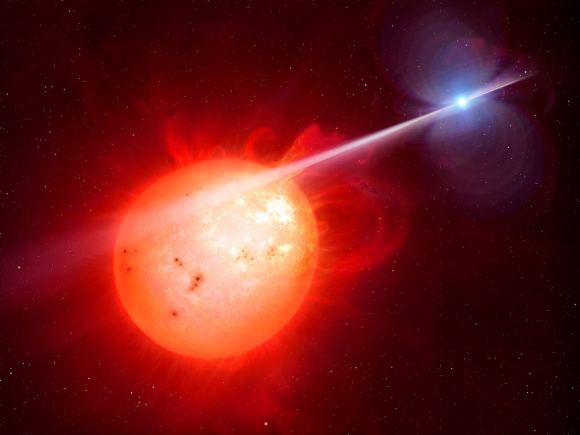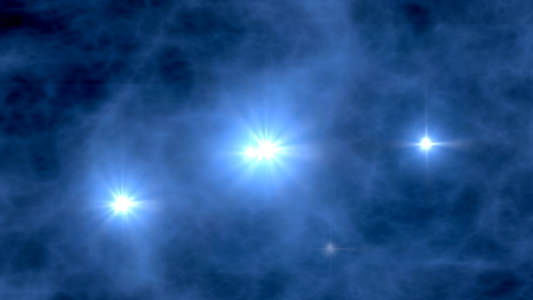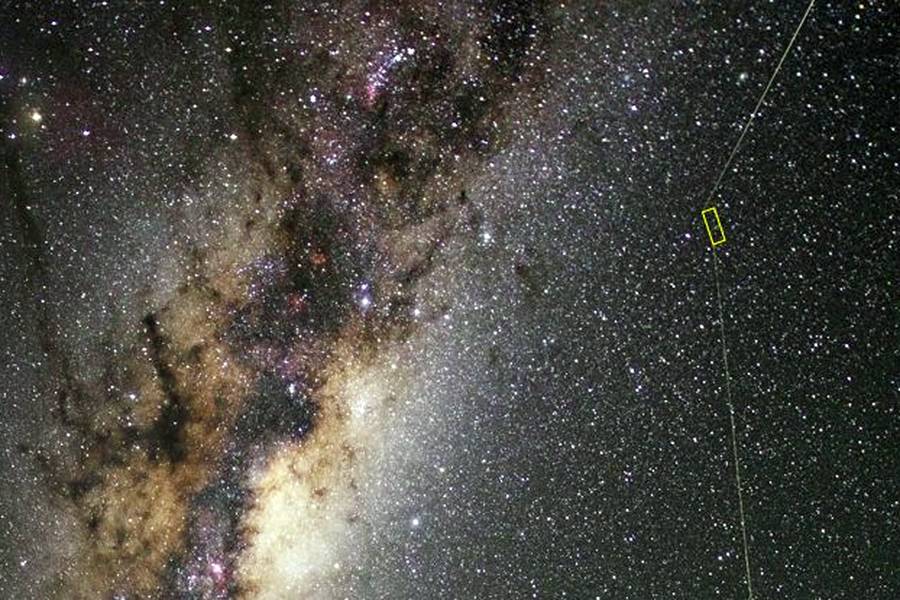According to the most widely-accepted cosmological theory, the first stars in our Universe formed roughly 150 to 1 billion years after the Big Bang. Over time, these stars began to come together to form globular clusters, which slowly coalesced to form the first galaxies – including our very own Milky Way. For some time, astronomers have held that this process began for our galaxy some 13.51 billion years ago.
In accordance with this theory, astronomers believed that the oldest stars in the Universe were short-lived massive ones that have since died. However, a team of astronomers from Johns Hopking University recently discovered a low-mass star in the Milky Way’s “thin disk” that is roughly 13.5 billion-year-old. This discovery indicates that some of the earliest stars in the Universe could be alive, and available for study.
This star was discovered as a companion to 2MASS J18082002–5104378, a subgiant that is roughly 1,950 light-years from Earth (in the constellation Ara) and has a low metal content (metallicity). When it was first observed in 2016, the discovery team noted unusual behavior which they attributed to the existence of an invisible companion – possibly a neutron star or a black hole.

For the sake of their study, which was recently published in The Astrophysical Journal, the John Hopkins team observed this star system between 2016 and 2017 using the Magellan Telescopes at the Las Campanas Observatory in Chile. After observing spectra from the system, they were able to discern the presence of an extremely faint secondary star, which has since been designated 2MASS J18082002–5104378 B.
Combined with radial velocity measurements of its primary, which yielded mass estimates, the team determined that the star is an low mass, extremely-low metallicity star. Based on its low metal content, they also determined that it is 13.5 billion years old, making it the oldest ultra metal-poor star discovered to date. This means that in cosmic terms, the star is a single generation removed from the Big Bang.
As Kevin Schlaufman – an assistant professor of physics and astronomy and the lead author of the study – indicated in a JHU Hub press release, this was an extremely unexpected find. “This star is maybe one in 10 million,” he said. “It tells us something very important about the first generations of stars.”
While astronomers have found 30 ancient ultra metal-poor stars in the past , each of them had the approximate mass of the Sun. The star Schlaufman and his team found, however, was only 14% the mass of the Sun (making it an M-type red dwarf). In addition, all the previously-discovered ultra-low metallicity stars in our galaxy were found to have orbits that generally took them far the galactic plane.

However, this newly-discovered star system orbits our galaxy on a circular orbit (like our Sun), which keeps its relatively close to plane. This discovery challenges a number of astronomical conventions, and also opens up some very interesting possibilities for astronomers.
For instance, astronomers have long theorized that the earliest stars to form after the Big Bang (known as Population III stars) would have been composed entirely of the most basic elements – i.e. hydrogen, helium, and small amounts of lithium. These stars then produced heavier elements in their cores which were released into the Universe when they reached the end of their lifespans and exploded as supernovae.
The next generation of stars to form were primarily composed of the same basic elements, but also included clouds of these heavier elements from the previous generation of stars into their makeup. These stars created more heavy elements which they then released at the end of their lifespans, gradually increasing the metallicity of stars in the Universe with every subsequent generation.
In short, astronomers believed until as recently as the late 1990s that all the earliest stars (which would have been massive and short-lived) are long extinct. In recent decades, astronomical simulations have been conducted that have indicated that low-mass stars from the earliest generation could still exist. Unlike giant stars, low-mass dwarfs (such as red dwarfs) can live for up to trillions of years.

The discovery of this new ultra metal-poor star not only confirms this possibility, but it indicates that there could many more stars in our galaxy that have very low masses and very low metallicity – which could in fact be some of the Universe’s very first stars. As Schlaufman indicated:
“If our inference is correct, then low-mass stars that have a composition exclusively the outcome of the Big Bang can exist. Even though we have not yet found an object like that in our galaxy, it can exist.”
If true, this could allow astronomers to study what conditions were like shortly after the Big Bang and before the end of the “Dark Ages”. This period, which lasted until roughly 1 billion years after the Big Bang, is also when the earliest stars and galaxies began to form, but is still inaccessible to our most powerful telescopes. But with stars surviving from this very early period of cosmic evolution, astronomers may finally have a window into this mysterious epoch.
Be sure to enjoy this video of that illustrates 2MASS J18082002–5104378 B’s orbit around the Milky Way, courtesy of JHU:
Further Reading: JHU Hub, The Astrophysical Journal

